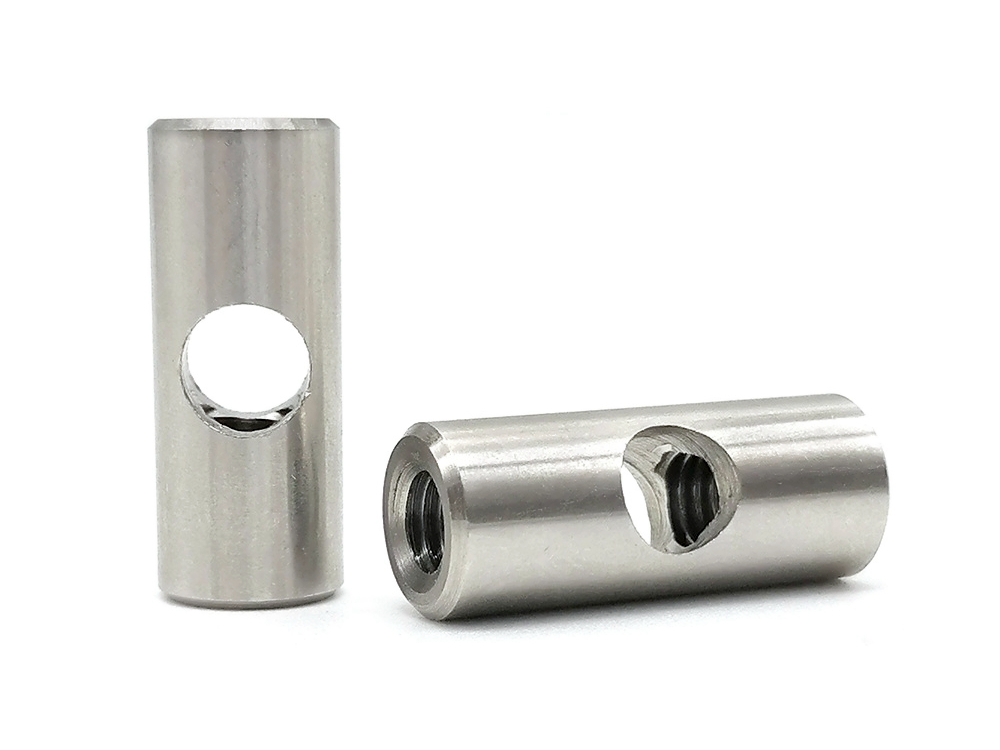Exploring Deep Hole Drilling Solutions for Robotics and Automation: A Real-World Case Study
Introduction
In the Robotics and Automation industry, precision components often require deep-hole drilling to ensure lightweight, durable, and precise internal structures. Parts such as robotic arms, hydraulic actuator cylinders, sensor housings, and precision joints rely heavily on deep-hole drilling techniques to achieve intricate internal channels and efficient weight management.
Advanced CNC drilling services specializing in deep hole drilling deliver the high accuracy, straightness, and surface quality demanded by automation systems. Mastering these techniques enhances critical robotic components' precision, performance, and operational efficiency.
Robotics & Automation Materials
Material Performance Comparison
Alloy | Tensile Strength (MPa) | Yield Strength (MPa) | Density (g/cm³) | Typical Robotics Uses | Advantage |
|---|---|---|---|---|---|
310-350 | 275-310 | 2.70 | Robotic arm segments, frames | Lightweight, excellent machinability | |
510-540 | 450-480 | 2.81 | Precision joints, actuators | High strength-to-weight ratio, durability | |
505-700 | 215-250 | 8.03 | Sensor housings, actuator bodies | Corrosion resistance, durability | |
900-1100 | 830-910 | 4.43 | High-load robotic components | Superior strength, lightweight properties |
Material Selection Strategy
Material selection for robotics deep hole drilling considers the following scenarios:
Lightweight robotic structures requiring precision internal channels: Aluminum 6061-T6 offers excellent machinability and strength.
High-performance joints and actuators with demanding mechanical loads: Aluminum 7075 provides an enhanced strength-to-weight ratio.
Components needing corrosion resistance and moderate strength: Stainless Steel SUS304 ensures reliability and durability.
Critical components under heavy loads requiring lightweight strength: Titanium Ti-6Al-4V delivers superior mechanical performance.
Deep Hole Drilling Processes
Process Performance Comparison
Drilling Technology | Hole Diameter Range (mm) | Depth-to-Diameter Ratio | Typical Robotics Uses | Key Advantages |
|---|---|---|---|---|
2-50 | Up to 100:1 | Actuator cylinders, precision arms | High precision, excellent surface finish | |
20-200 | Up to 400:1 | Large structural frames, hydraulic components | Efficient deep drilling, reliable chip removal | |
1-50 | Up to 50:1 | Complex sensor housings, intricate components | High flexibility, precise angled drilling | |
0.1-3 | Up to 100:1 | Micro-channels, sensors, cooling holes | Ultra-precise, minimal thermal distortion |
Process Selection Strategy
Selecting optimal deep hole drilling processes is crucial for robotic components:
Precision cylinders and actuator arms: Gun Drilling ensures straightness and superior internal surface quality.
Large-diameter and deep structural components: BTA Drilling provides efficiency and hole accuracy.
Components with complex drilling requirements: Multi-axis CNC Drilling offers versatility and precise geometry control.
Precision sensors and micro-cooling holes: EDM Drilling guarantees high accuracy and minimal stress.
Surface Treatment
Surface Treatment Performance
Treatment Method | Corrosion Resistance | Wear Resistance | Temperature Stability (°C) | Typical Robotics Uses | Key Features |
|---|---|---|---|---|---|
Excellent (≥500 hrs ASTM B117) | Moderate-High | Up to 400 | Aluminum robotic frames | Increased surface hardness, aesthetic finish | |
Superior (≥1000 hrs ASTM B117) | High (HV600-750) | Up to 400 | Precision joints, actuators | Enhanced durability, consistent thickness | |
Superior (≥1000 hrs ASTM B117) | High (HV2000-3000) | Up to 600 | High-wear components, joints | Superior hardness, extended lifespan | |
Excellent (≥600 hrs ASTM B117) | Moderate | Up to 350 | Stainless steel sensor housings | Improved corrosion resistance, cleanliness |
Surface Treatment Selection
Surface treatments significantly enhance robotics component performance:
Aluminum structural components requiring robust surface protection: Anodizing delivers excellent durability and aesthetics.
Actuators and joints exposed to high wear: Electroless Nickel Plating ensures uniform wear protection.
High-wear robotic joints and precision components: PVD Coating offers exceptional wear resistance and hardness.
General-purpose stainless steel components: Passivation enhances corrosion protection and reliability.
Quality Control
Quality Control Procedures
Precise dimensional inspections using Coordinate Measuring Machines (CMM) and advanced bore gauges.
Internal surface quality verification with video scopes and profilometry.
Mechanical property testing (tensile strength, yield strength) following ASTM and ISO standards.
Non-destructive testing (NDT), including ultrasonic inspection (UT) and magnetic particle inspection (MPI), ensures structural integrity.
Corrosion resistance testing compliant with ASTM B117 salt spray methods.
Full documentation and traceability according to ISO 9001 quality standards.
Industry Applications
Deep Hole Drilled Robotics Components
Lightweight and high-strength robotic arms and joints.
Precision hydraulic actuator cylinders.
Complex sensor and instrumentation housings.
High-performance, load-bearing automation frames and supports.
Related FAQs:
Why is deep hole drilling essential in robotics manufacturing?
Which materials are best suited for lightweight robotic components?
How does gun drilling improve the precision of robotic actuators?
What surface treatments enhance robotics components' durability?
Which quality standards apply to deep hole drilling in robotics and automation?

